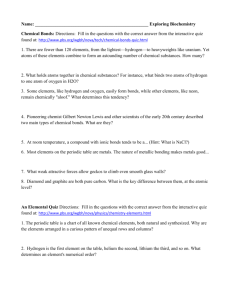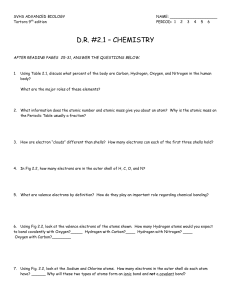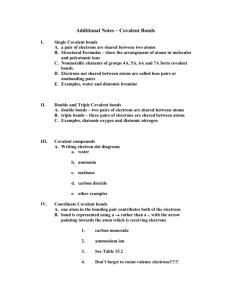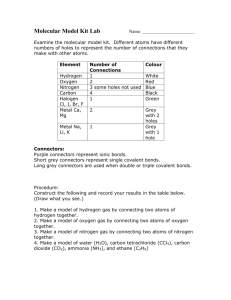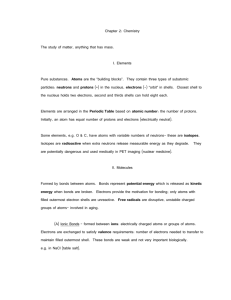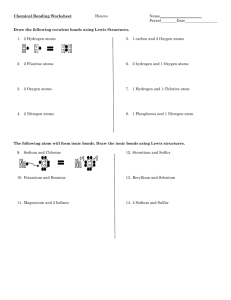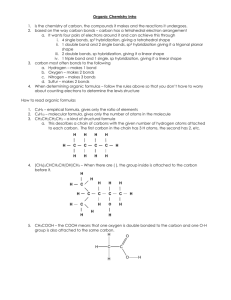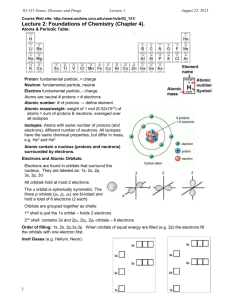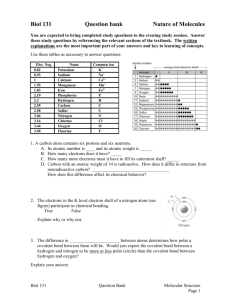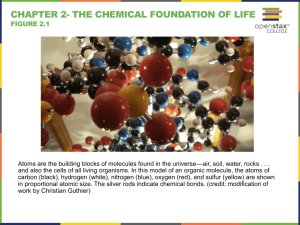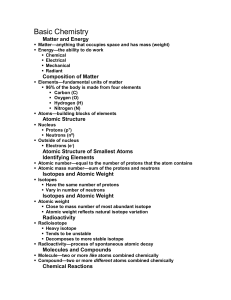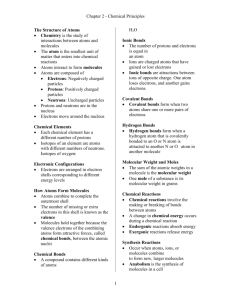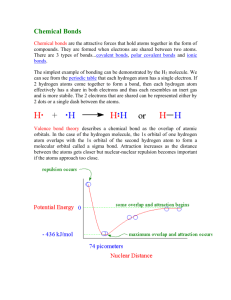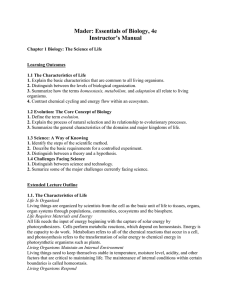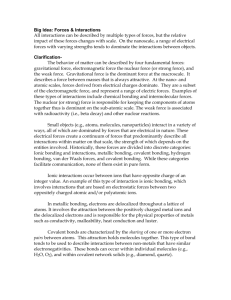Midterm 1 study guide
advertisement
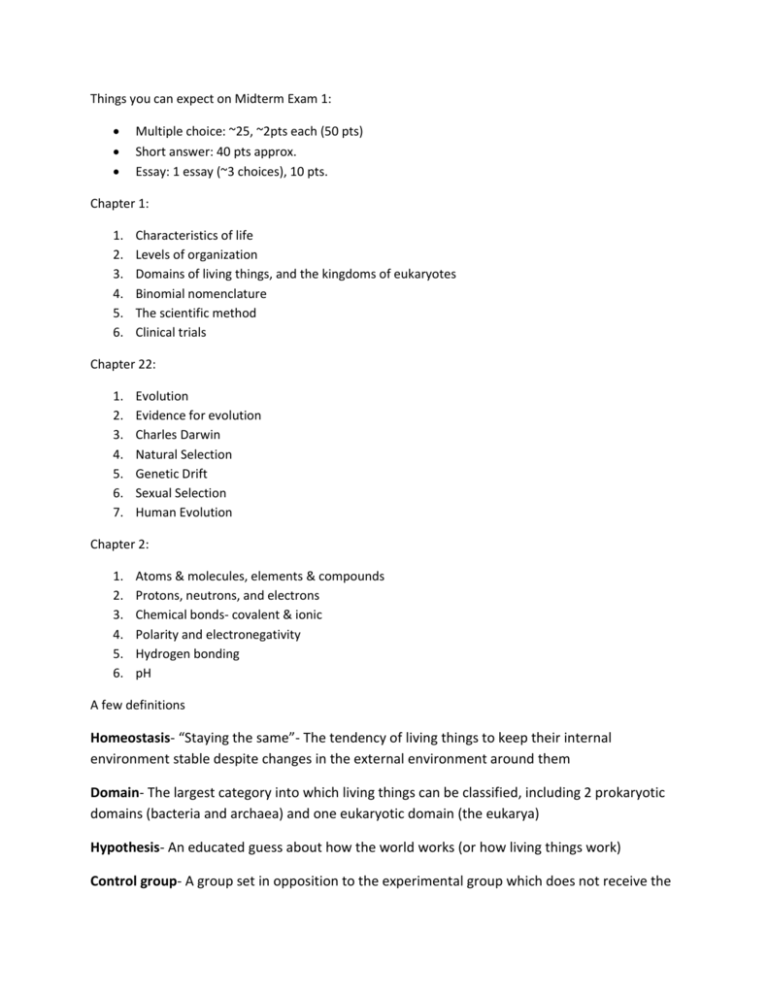
Things you can expect on Midterm Exam 1: Multiple choice: ~25, ~2pts each (50 pts) Short answer: 40 pts approx. Essay: 1 essay (~3 choices), 10 pts. Chapter 1: 1. 2. 3. 4. 5. 6. Characteristics of life Levels of organization Domains of living things, and the kingdoms of eukaryotes Binomial nomenclature The scientific method Clinical trials Chapter 22: 1. 2. 3. 4. 5. 6. 7. Evolution Evidence for evolution Charles Darwin Natural Selection Genetic Drift Sexual Selection Human Evolution Chapter 2: 1. 2. 3. 4. 5. 6. Atoms & molecules, elements & compounds Protons, neutrons, and electrons Chemical bonds- covalent & ionic Polarity and electronegativity Hydrogen bonding pH A few definitions Homeostasis- “Staying the same”- The tendency of living things to keep their internal environment stable despite changes in the external environment around them Domain- The largest category into which living things can be classified, including 2 prokaryotic domains (bacteria and archaea) and one eukaryotic domain (the eukarya) Hypothesis- An educated guess about how the world works (or how living things work) Control group- A group set in opposition to the experimental group which does not receive the independent variable treatment Control variables- things besides the independent variable which could affect the outcome of an experiment (that is, which could influence the dependent variable results) Proton- Mass= 1 amu, positive (+)charge- defines the element as what it is Neutron- Mass= 1 amu, neutral (no charge)- different numbers of neutrons differentiate an element’s isotopes Electron- Mass = 0 amu (~weightless), negative (-) charge, float in orbitals around the nucleusfirst orbital holds a maximum of 2 electrons, 2nd and 3rd can hold as many as 8 apiece Octet rule- Atoms fill orbitals in sequence, and always seek to have complete outer shells. Chemical bonds are formed so that atoms involved can have completely electron-filled orbitals Ionic bond- An atom takes an electron completely away from another atom, forming two charged ions- one positive, the other negative. Example: Na + Cl Na+ + ClCovalent Bond- Two atoms share electrons, forcing the two into a bound partnership called a molecule. Example: H2O Hydrogen bond- Some covalent partners don’t share equally. When electrons spend more time around one atom compared with another, a charge polarity results. Because the electrons in a water molecule spend more time around oxygen than hydrogen, oxygen gains a partial negative charge, and hydrogen a partial positive charge. A hydrogen bond is an attraction between the positive part of one water molecule and the negative part of another one. Also: hydrogen bonds can form between many polar molecules, not just water Chapter 1 I know some of the characteristics that all living things have in common. I know how living systems are organized at levels ranging from the nonliving atoms and molecules of which they are comprised, up through the biosphere in which they all exist. I understand what is meant by emergent properties which appear with each new level. I understand differences between prokaryotic and eukaryotic cells. I know some of the defining characteristics common to all living things. Taxonomy is a major subfield of biology. I understand its goals, and know the major domains and kingdoms it has created. I know other subfields of biology I understand the process of hypothesis testing. I know what dependent and independent variables are, and I know what controlled variables might be necessary to test in a given hypothesis. I can design a simple experiment to test a basic hypothesis, and I can look critically at experimental designs which I see around me. Ch 22: Evolution I understand how evolution is caused by the process of natural selection. I understand the parts of the mechanism of natural selection. I can name several kinds of evidence which support Charles Darwin’s theory of evolution by natural selection. I can explain how these kinds of evidence support evolution. While I may not be able to retell the story of Charles Darwin’s voyage, I know the relevance of the HMS Beagle, the Galapagos islands, and many of the creatures there, and can explain how these creatures helped him formulate his story, and derive the mechanism of natural selection. I understand the effects of genetic drift on the evolution of a species, and I understand how the bottleneck effect and the founder effect can magnify the force of genetic drift on a population. I can recognize when sexual selection has occurred within a species. I know a few adaptations of humans which separate them from primate ancestors. I know what Homo erectus and Homo neanderthalis species are, and how they are pertinent to the history of human evolution. Chapter 2: Chemistry of life I know what atoms are, and that atoms are comprised of three basic subatomic particles, and I know how each influences the physical properties of elements, such as valence, isotopes, etc. I know what elements are, and I can “read” the periodic table for basic information about any element. I know the differences between elements, compounds, and mixtures, homogeneous and heterogeneous. I know what chemical bonds are, I know the two basic kinds of chemical bonds, how they are formed, and how different compounds are formed from different kinds of chemical bonds. I understand what electronegativity is and how it affects the behavior of chemical bonds. I know the difference between polar and nonpolar substances, and can give examples. I understand the definition of pH I know what the four major macromolecules of living things are, and know an example of each.



